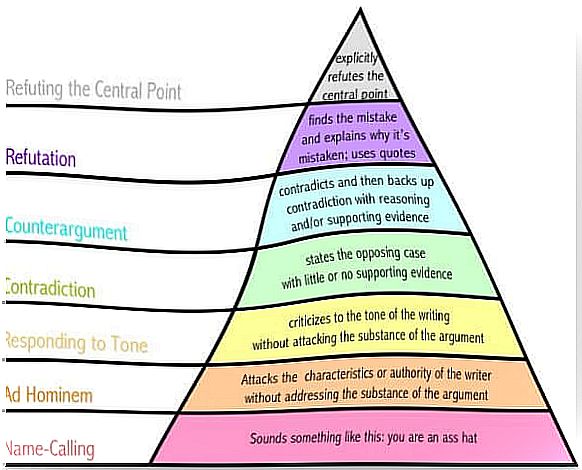Not Agreeing – 4 Effective And Elegant Methods

Learning not to agree is a very valuable art. With it, you can avoid falling into a simple discussion, effectively manage the speaker to avoid conflict and define your position with elegance.
We can accomplish all this without being offensive or insulting. This is undoubtedly a valuable tool, and it is based on not agreeing in a smart way. This is something we should all be able to do on a daily basis.
Let’s face the facts, if there is one thing many of us do not know how to do well it is to disagree. Furthermore, there are still many who confuse the terms and think that this is synonymous with quarreling. This is a mistake. Therefore, we need to clarify a key idea.
Not agreeing precisely means that you do not like the same thing about an idea or opinion, but it does not have to be a threat or complaint against someone.
Another element to take into account is that by not agreeing in a certain way, you define your individuality. It gives you the ability to have your own opinion and not just defend your ideas. You must argue intelligently to enrich the communicative process and the relationship itself.
Not agreeing with anyone nowadays means that you suddenly create a polarization where two people think they are sitting on the absolute truth. Soon their comments seem to lack valid arguments, and almost without noticing it, a dispute begins where no one wins and everyone loses.
We often see this on social networks and also in political scenarios. It is therefore advisable to learn not to agree in a way that is characterized by elegance and efficiency, in order to avoid these meaningless discussions. Let’s take a look at four strategies to achieve this.

People who know how to not agree in a skillful way know a very simple secret. One must listen carefully to the speaker and understand that nothing that is said should be taken personally.
The moment one assumes that what is said is a threat, the quarrel will begin, after which everything is lost. In other words, if the person in front of you says that the most beautiful color in the world is green, you do not need to start a discussion just because you think yellow looks better.
It is therefore a good idea to maintain an open and relaxed mind. Do not take the other person’s arguments on an emotional level. Also understand that in order not to agree, you do not have to threaten or underestimate the other person’s opinion.
In our daily lives, this is something we encounter very often. People are used to seeing the world from their own point of view, and only in that way. Reasoning them can sometimes seem like an impossible task, we know. That is why we remind ourselves that sometimes it is better to remain silent and agree than to say “I do not agree”.
However, learning not to agree will allow you to do several things. The first is that it will allow you to reaffirm your identity, self-esteem and opinions. The second is that it will allow you to be more social. It will enrich your relationships and always leave you in tune with what you feel, say and do.

Often when we talk to someone and choose not to agree with a certain fact, concept or idea, the tone and volume of our voice changes. At that moment, our arguments cease to matter, as the threatening tone will give rise to a discussion and tension.
To avoid this, it is best to work on your emotional regulation. Again, you need to understand that disagreements should not be seen as offensive. Let us keep track of our emotions and listen to the tone of our voice.
Paul Graham is a British computer scientist and essayist who has gained considerable fame thanks to a work he calls “How to Agree” , which was published in 2008. In it he explains that in order not to agree, one must understand that there are some more profitable discussion levels.
Just as there are levels where dialogue can lead to the least useful scenarios, to insults and dissatisfaction.
To be effective and use elegance when you do not agree, we must therefore stay at this top level. We must remain within that argumentative excellence that we can learn to achieve over time.

As you can see in the diagram, you should focus on the first four areas to deal with deviations. The fifth area and beyond, those colored yellow and pink, are based on attacks, criticism and insults. Therefore, it is best that in every discussion where you do not agree with someone you achieve the following:
- Provide constructive and useful arguments about the central point where deviations occur.
- Make the other person see your point of view with contrasting arguments and reasons why he is not right, or why the person is not validly defending his opinion. You need to know how to give counter-arguments with agility.
- Get the other person to see that what this guy or defender does not have concrete and reliable evidence. This is very useful when someone says, for example, that “this is true because everyone thinks it is the way it is.”
Finally, we just want to add one more detail. Everyone knows that it is not always easy to learn not to agree. We often make this decision to an emotional terrain, and there we lose all control. Let us therefore understand that a difference of opinion is not an attack, but in fact an opportunity to find common ground, to learn from others and to achieve things.









